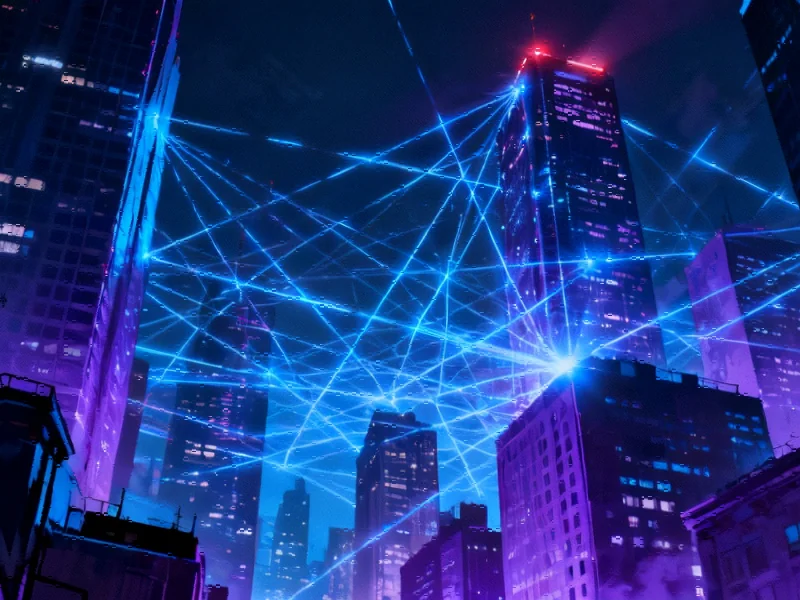The Fragility of Smart Cities in Crisis
Despite massive investments in artificial intelligence and digital infrastructure, most smart cities remain dangerously vulnerable during emergencies. A comprehensive Deloitte study reveals that while 66% of 167 cities surveyed are heavily investing in AI and 80% plan to do so within three years, these technological advancements haven’t translated into effective crisis response capabilities. The fundamental issue lies in system fragmentation—where advanced technologies operate in isolation rather than as coordinated networks.
Jose Rolon, former FDNY and U.S. Army Civil Affairs specialist, encapsulates the problem: “The Achilles’ heel of public safety technology is its lack of interoperability.” This fragmentation manifests through disconnected emergency response systems, uncoordinated traffic management during evacuations, and isolated environmental monitoring platforms that cannot share critical data when it matters most.
The Emergence of Omni Cities and Unified AI Architecture
Enter the concept of “Omni Cities”—resilient, equitable urban ecosystems powered by integrated AI nervous systems. At the forefront of this movement is Omni | X, a groundbreaking civic operating system incubating at both the Harvard Innovation Lab and MIT Media Lab’s AI Venture Studio. The system represents a paradigm shift from traditional smart city approaches that prioritized technology over human needs.
“By embedding human oversight and public accountability into every decision cycle, we ensure that AI strengthens democratic governance while improving the safety and performance of cities,” explains Cesar R. Hernandez, Omni | X Founder and Equity Fellow at Harvard Kennedy School’s Center for Public Leadership. His company is building a unified AI architecture that connects drones, robots, and critical infrastructure systems to bridge the gap between innovation and governmental accountability.
This approach aligns with broader industry developments where major technology players are recognizing the importance of integrated systems, as seen in OpenAI’s partnerships with entertainment industries that demonstrate how AI systems can collaborate across sectors.
Agentic AI: The Next Evolution in Urban Intelligence
Traditional smart systems are giving way to agentic AI—systems capable of thinking, anticipating, and acting autonomously while setting and prioritizing urban goals. North American cities lead in this adoption at 83%, with small cities following closely at 74%, indicating a growing recognition that agentic systems provide the coordination capabilities essential for true urban resilience.
The power of agentic AI lies in its ability to enable shared coordination between previously disconnected systems. During emergencies, this translates to faster cross-agency collaboration, unified response protocols across departments, and immediate service performance optimization. These capabilities help cities overcome the vertical silos that typically block communication between systems when standardization is absent.
The importance of reliable infrastructure for these systems cannot be overstated, especially considering recent incidents that exposed the fragility of cloud-centric infrastructure during critical moments.
The Governance Framework for Interoperable AI
True interoperability extends beyond simple data exchange to encompass comprehensive governance frameworks and ethical standards. Cities worldwide are learning that digital sovereignty requires resilient infrastructure, secure data storage, and skilled teams working within accountable governance structures where trust becomes the key driver for system compatibility.
Los Angeles exemplifies practical implementation through its platform that shares over 500 datasets across 20 city departments, enabling agencies to coordinate effectively during emergencies. This approach demonstrates how AI interoperability emerges as a critical solution for urban challenges, providing the foundation for coordinated action when seconds count.
Meanwhile, global technology partnerships continue to evolve, as evidenced by major international agreements on critical minerals that support the hardware infrastructure necessary for advanced AI systems.
Ethical Imperatives and Inclusive Design
As Hernandez poignantly observes, “We are entering an era where intelligence is abundant but conscience is scarce. The future of civilization will depend on how well we align the two.” This alignment requires prioritizing inclusivity, as AI systems often fail vulnerable populations when trained on biased data.
The essential ethical protocols for agentic systems include:
- Bias reduction through regular audits and diverse datasets
- Privacy protection requiring clear, informed consent mechanisms
- Transparency that makes AI decisions understandable and justifiable by humans
Local leaders are addressing these challenges by mandating open protocols and public accountability frameworks. This reflects a growing understanding that AI governance requires both technical standards and robust oversight—principles that extend to enterprise security updates and consumer-facing applications alike.
The Path Forward: From Smart Cities to Resilient Urban Ecosystems
The transition from disconnected smart cities to unified “Omni Cities” demands both technological innovation and careful governance frameworks that prioritize interoperability, accountability, and equitable access. As urban centers worldwide demonstrate, fragmented systems inevitably fail citizens during crucial moments.
The future of urban resilience depends on creating AI systems that work within civic structures as cohesive networks rather than isolated solutions. This vision aligns with transformative AI projects across the technology sector that aim to create more integrated, responsive systems.
Ultimately, AI interoperability represents more than technical compatibility—it embodies the lifeline that enables cities to protect residents, maintain essential services, and demonstrate true intelligence through coordinated action during both daily operations and unprecedented crises.
This article aggregates information from publicly available sources. All trademarks and copyrights belong to their respective owners.
Note: Featured image is for illustrative purposes only and does not represent any specific product, service, or entity mentioned in this article.



